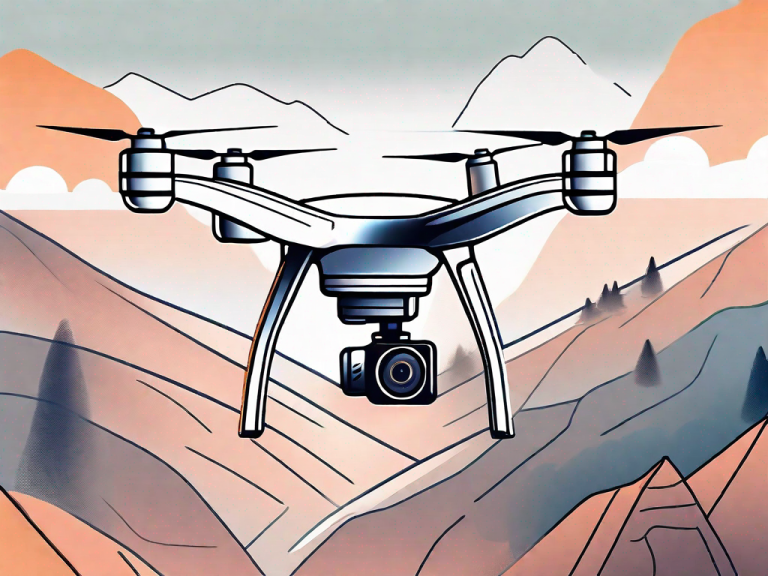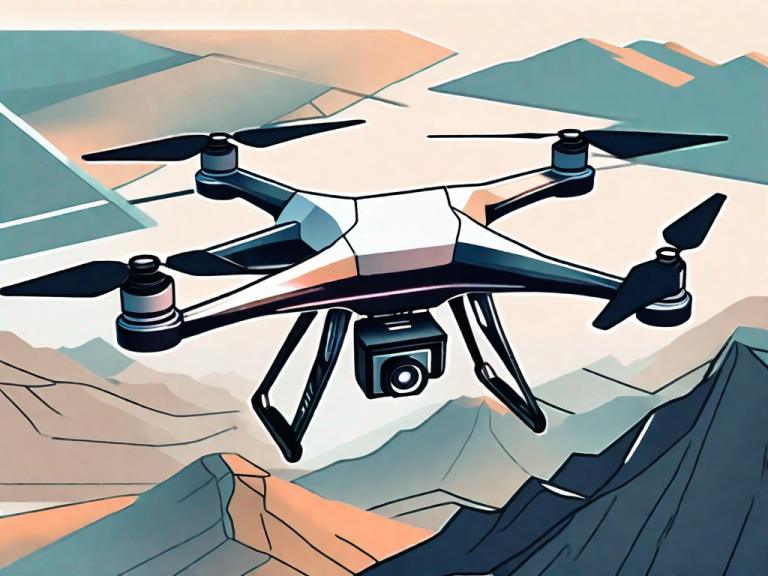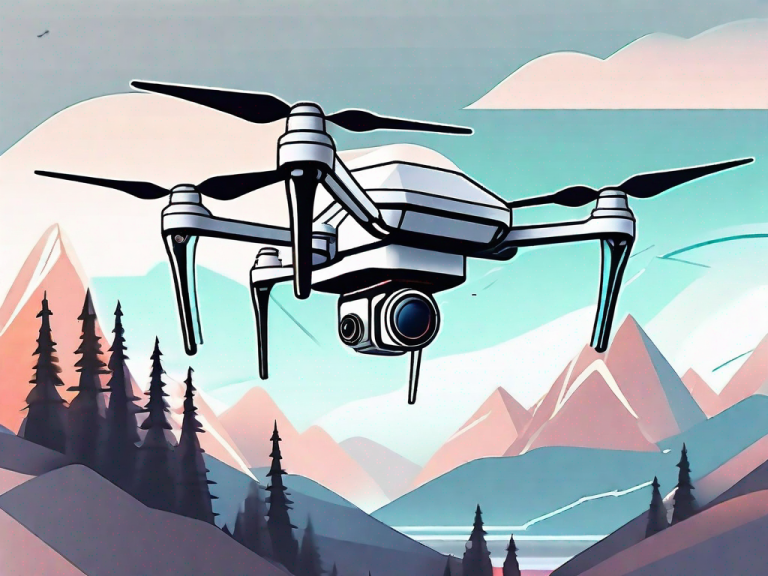If you’re in the market for a drone and have a budget of under $1000, you’re at the right place. Drones have become increasingly popular among hobbyists, photographers, and even professional filmmakers. With so many options available, it can be overwhelming to choose the right drone that suits your needs and falls within your budget. In this article, we will guide you through the process of finding the best drone for under $1000, taking into consideration your skill level, purpose, and key features to look for.
Understanding Your Needs: Choosing the Right Drone
Before diving into the world of drones, it’s important to consider your skill level and identify your purpose for owning a drone. This will help you narrow down your options and find the perfect drone that meets your expectations.
When it comes to choosing the right drone, there are a few key factors to consider. These include assessing your skill level and identifying your purpose for owning a drone.
Assessing Your Skill Level
Are you a beginner, intermediate, or advanced drone pilot? This is an important question to ask yourself as it determines the complexity and features you should look for in a drone. Beginners should opt for drones that are easy to fly and come with built-in safety features to prevent accidents.
If you’re just starting out in the world of drones, it’s essential to choose a drone that is specifically designed for beginners. These drones often come with features like altitude hold, headless mode, and one-key takeoff and landing, making them easier to control and navigate. Additionally, they may have propeller guards to protect the drone and surroundings from any accidental collisions.
Intermediate drone pilots, on the other hand, have a bit more experience and may be looking for drones with advanced features. These drones often have better camera capabilities, longer flight times, and more advanced flight modes like follow me and waypoint navigation. They require a higher level of skill to operate effectively.
For advanced drone pilots, the sky is the limit. These individuals have mastered the art of flying drones and are often looking for high-performance drones with professional-grade cameras, long-range capabilities, and advanced flight modes. These drones are typically used for commercial purposes such as aerial photography and videography, surveying, and inspection.
Identifying Your Purpose for a Drone
What do you plan to use the drone for? Are you a photography enthusiast looking to capture stunning aerial shots, or are you more interested in racing drones? Knowing your purpose will help you narrow down the features that are important to you.
If you’re interested in aerial photography or videography, you’ll want to look for a drone with a high-quality camera and stable flight capabilities. Drones with gimbals and image stabilization technology can help you capture smooth and professional-looking footage. Some drones even have built-in intelligent flight modes like active track and panorama mode, which can take your aerial photography to the next level.
On the other hand, if you’re more interested in racing drones, you’ll want to prioritize speed, agility, and durability. Racing drones are designed to be lightweight and aerodynamic, allowing them to reach high speeds and maneuver through tight spaces. Look for drones with brushless motors, high-performance flight controllers, and FPV (First Person View) capabilities to enhance your racing experience.
Other purposes for owning a drone may include aerial mapping and surveying, search and rescue operations, or simply recreational flying. Each of these purposes will require different features and capabilities, so it’s important to identify your specific needs before making a purchase.
Key Features to Consider When Buying a Drone
When purchasing a drone, there are several key features to consider that will greatly impact your flying experience.
But before we dive into the details, let’s take a moment to appreciate the incredible technological advancements that have made drones accessible to the masses. Drones have revolutionized industries such as aerial photography, videography, surveying, and even package delivery. They have opened up new possibilities and perspectives, allowing us to capture breathtaking footage from the sky.
Now, let’s explore the key features you should consider when buying a drone:
Camera Quality
If you’re into aerial photography or videography, the camera quality is of utmost importance. A drone with a high-resolution camera will enable you to capture stunning images and videos with exceptional detail. Look for drones that offer advanced features like adjustable aperture, manual focus, and the ability to shoot in RAW format for maximum flexibility during post-processing.
Imagine soaring above a picturesque landscape, capturing every intricate detail with your drone’s top-notch camera. From vibrant sunsets to majestic mountains, your drone will become your artistic tool, allowing you to express your creativity in ways you never thought possible.
Flight Time
Flight time refers to how long the drone can stay in the air before you need to recharge its batteries. Longer flight times are desirable, especially if you plan on capturing a lot of footage or flying long distances.
Picture this: you’re on an epic adventure, exploring remote locations, and documenting your journey with your trusty drone. With an extended flight time, you won’t have to worry about cutting your flights short or missing out on capturing those extraordinary moments. You’ll have the freedom to fly for longer periods, allowing you to fully immerse yourself in the experience.
Range
The range of a drone is the maximum distance it can fly away from the controller without losing connection. If you’re planning on exploring vast landscapes or flying in remote areas, a drone with an extended range will be essential.
Imagine being able to send your drone soaring high above a dense forest or across a vast ocean, capturing footage that would otherwise be impossible to obtain. With an extended range, you can push the boundaries of exploration and capture unique perspectives that will leave your audience in awe.
Stability and Maneuverability
A stable and maneuverable drone is crucial for capturing smooth footage and executing precise flight maneuvers. Look for drones that come with built-in stabilization systems and have a reputation for being easy to control.
Imagine effortlessly gliding through the air, smoothly capturing every movement with your drone’s impeccable stability. Whether you’re chasing a speeding car or following a flock of birds, a stable and maneuverable drone will ensure that your footage is steady and visually stunning.
Additionally, a drone that is easy to control will give you the confidence to explore new flying techniques and execute complex flight maneuvers. You’ll be able to unleash your creativity and push the boundaries of what is possible with aerial cinematography.
As you can see, there are several key features to consider when buying a drone. Each feature plays a vital role in enhancing your flying experience and unlocking new possibilities. So, take your time, do your research, and choose a drone that aligns with your needs and aspirations. Happy flying!
Top Drones Under 1000: A Detailed Review
Now that you have a better understanding of the key features to consider, let’s dive into a detailed review of the top drones available for under $1000.
Drone 1
Drone 1 is a versatile drone that offers a great value for the price. It comes with a high-resolution camera, impressive flight time, and a solid range. Additionally, it boasts advanced stabilization features, making it ideal for capturing professional-grade footage.
One of the standout features of Drone 1 is its high-resolution camera. With a resolution of 4K, it allows you to capture stunning, detailed aerial footage. Whether you’re shooting landscapes, action shots, or even professional videos, this drone’s camera will deliver exceptional results.
In terms of flight time, Drone 1 doesn’t disappoint. With an average flight time of 25 minutes, you’ll have plenty of time to explore the skies and capture breathtaking footage. This extended flight time is made possible by the drone’s powerful battery, which can be easily recharged for multiple flights.
When it comes to range, Drone 1 offers a solid performance. With a maximum range of 1.2 miles, you can confidently fly the drone without worrying about losing connection. This range is especially useful for capturing footage in wide open spaces or when exploring remote areas.
But what sets Drone 1 apart from other drones in its price range is its advanced stabilization features. Equipped with a 3-axis gimbal, the drone ensures smooth and steady footage, even in windy conditions or during fast-paced flights. This level of stabilization is crucial for professional-grade footage, as it eliminates any unwanted shakes or vibrations.
Drone 2
Drone 2 is perfect for beginners who are just getting started with flying drones. It comes equipped with beginner-friendly features such as automatic takeoff and landing, one-touch return, and altitude hold. Despite its ease of use, it still delivers impressive performance and decent camera quality.
For beginners, one of the most daunting aspects of flying a drone is the takeoff and landing process. However, Drone 2 simplifies this process with its automatic takeoff and landing feature. With just a push of a button, the drone will safely take off or land, eliminating any potential mishaps.
Another useful feature for beginners is the one-touch return function. If you ever lose sight of the drone or feel like it’s getting out of control, simply press the return button, and the drone will automatically fly back to its original position. This feature provides peace of mind and ensures that you won’t lose your drone.
Drone 2 also comes with altitude hold, which is a great feature for beginners who are still getting the hang of controlling the drone’s height. With altitude hold, the drone will automatically maintain its current altitude, allowing you to focus on capturing footage or mastering other flight maneuvers.
Despite being designed for beginners, Drone 2 doesn’t compromise on performance. It offers a maximum flight time of 20 minutes, which is more than enough for most recreational flights. Additionally, the drone’s camera delivers decent quality, with a resolution of 1080p. While it may not match the professional-grade footage of higher-end drones, it still captures clear and vibrant images.
Drone 3
Drone 3 is a top contender for those looking for an all-around drone that excels in both performance and camera capabilities. With an extended flight time, extended range, and advanced flight modes, it offers endless possibilities for both casual and professional drone pilots.
One of the standout features of Drone 3 is its extended flight time. With an average flight time of 30 minutes, you’ll have even more time to explore and capture stunning aerial shots. This extended flight time is made possible by the drone’s efficient battery management system, which optimizes power usage for longer flights.
In terms of range, Drone 3 surpasses expectations. With a maximum range of 2.5 miles, you can confidently fly the drone to great distances without worrying about losing signal. This extended range opens up a world of possibilities, allowing you to explore vast landscapes or capture footage in remote locations.
Drone 3 also comes equipped with advanced flight modes, which add a new level of creativity to your aerial photography. One of these modes is the follow me mode, where the drone will autonomously follow you, capturing footage from different angles. This is perfect for capturing action shots or creating dynamic videos.
Another impressive flight mode is the waypoint navigation mode. With this mode, you can pre-plan a flight path by setting waypoints on a map, and the drone will autonomously follow that path, capturing footage along the way. This feature is ideal for creating cinematic shots or mapping out specific areas.
When it comes to camera capabilities, Drone 3 doesn’t disappoint. It comes with a high-resolution camera that can shoot in 4K, allowing you to capture breathtaking aerial footage with incredible detail. Additionally, the camera is equipped with a wide-angle lens, which provides a broader perspective and allows you to capture more of the scenery in a single shot.
Making the Most of Your Drone
Once you have chosen the perfect drone for your needs, it’s essential to make the most out of your investment. Here are a few tips to help you maximize your drone’s potential:
Maintenance Tips for Your Drone
Regular maintenance is crucial for keeping your drone in top shape. Clean the propellers, regularly update the firmware, and inspect the body for any damage. Additionally, always follow the manufacturer’s guidelines for storage and transportation.
Drone Accessories Worth Investing In
To enhance your drone flying experience, consider investing in accessories such as spare batteries, a carrying case, ND filters for the camera, and additional memory cards. These accessories will allow you to take your drone adventures to the next level.
Safety and Legal Considerations for Drone Flying
Before taking off with your new drone, it’s important to understand the safety and legal considerations associated with drone flying.
Understanding Drone Regulations
Make sure you familiarize yourself with the laws and regulations regarding drone usage in your area. Different countries and regions may have specific rules regarding where, when, and how high you can fly your drone.
Tips for Safe Drone Operation
Always fly your drone in open spaces away from people, buildings, and airports. Keep an eye on the battery level and avoid flying your drone in adverse weather conditions. Lastly, be mindful of your surroundings and always prioritize the safety of yourself and others.
Conclusion: Choosing the Best Drone for Your Needs and Budget
With the wide range of drones available in the market, finding the best one for your needs and budget can be challenging. By considering your skill level, purpose, and key features, you can narrow down your options and make an informed decision. Whether you’re into aerial photography, racing, or simply exploring the skies, there’s a perfect drone waiting for you within the $1000 price range.
Frequently Asked Questions (FAQs)
1. Can I fly my drone at night?
No, most countries have restrictions on flying drones at night due to safety concerns. However, some drones may come equipped with lights that allow for limited nighttime flying in controlled environments.
2. Do I need a license to fly a drone?
It depends on your country’s regulations. In many countries, drones under a certain weight limit do not require a license for recreational use. However, commercial drone operations may require a license or certification.
3. How far can drones fly?
The distance a drone can fly depends on its range capabilities and the signal strength of the controller. Most consumer drones have a range of up to several kilometers, but it’s important to check the specifications of the specific drone you are considering.
4. Are drones difficult to fly?
Modern drones are designed to be user-friendly, with features such as GPS stabilization and automatic flight modes. While there may be a learning curve, most beginners can become proficient in flying a drone with practice and patience.
5. Can drones be used in bad weather?
Flying drones in adverse weather conditions, such as strong winds or heavy rain, is generally not recommended. It can affect the stability and maneuverability of the drone, potentially leading to accidents or damage to the drone.
6. How can I improve the battery life of my drone?
To extend the battery life of your drone, avoid aggressive maneuvers and fly in optimal weather conditions. Additionally, ensuring that the batteries are fully charged before each flight and minimizing idle time can help maximize flight time.
7. Can I attach additional accessories to my drone?
Many drones come with accessory ports or mounting systems that allow you to attach additional equipment, such as lights, cameras, or payload delivery systems. However, it’s important to check the compatibility and weight limitations of your drone before adding accessories.






